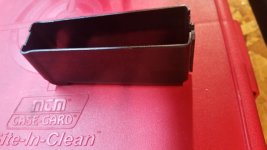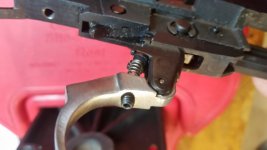bamaranger
New member
Ruger/Brownell
Yeah, those two fellows collaborated on the original stock design, but I suspect that Len's input was mostly on the exterior/appearance. Ruger new what he wanted,and Brwonell came up with the stock, aesthetically.
Seems I've read the intention of the angled angled front action screw to draw the action down and back, and theoretically eliminate some of the bedding issues associated with vertical screws with down pressure only, and fitting of the recoil lug. I should add the a guy named Jim Sullivan was the lead engineer on the project....I dunno who's idea the angled bedding screw was of the three, but again, Brownell's was largely aesthetic. I'll go down to my Ruger book and check. Seems as I recall a Bill Ruger quote on this.
The Sullivan/ruger theory was good, but early versions of his rifle were sometimes compromised with barrels supplied by contractors. New rifles with Ruger barrels supposedly do much better overall.
I can rememeber another Bill Ruger comment to the effect that he wanted the rifle as sleek as possible...., then he went off on a business trip or hunting, and when he returned, the magazine capacity was higher,and the stock more beefy than he intended, but it was done, and he wanted to get it on the market, so slimming the M77 was left until the release of the MkII.
Yeah, those two fellows collaborated on the original stock design, but I suspect that Len's input was mostly on the exterior/appearance. Ruger new what he wanted,and Brwonell came up with the stock, aesthetically.
Seems I've read the intention of the angled angled front action screw to draw the action down and back, and theoretically eliminate some of the bedding issues associated with vertical screws with down pressure only, and fitting of the recoil lug. I should add the a guy named Jim Sullivan was the lead engineer on the project....I dunno who's idea the angled bedding screw was of the three, but again, Brownell's was largely aesthetic. I'll go down to my Ruger book and check. Seems as I recall a Bill Ruger quote on this.
The Sullivan/ruger theory was good, but early versions of his rifle were sometimes compromised with barrels supplied by contractors. New rifles with Ruger barrels supposedly do much better overall.
I can rememeber another Bill Ruger comment to the effect that he wanted the rifle as sleek as possible...., then he went off on a business trip or hunting, and when he returned, the magazine capacity was higher,and the stock more beefy than he intended, but it was done, and he wanted to get it on the market, so slimming the M77 was left until the release of the MkII.




